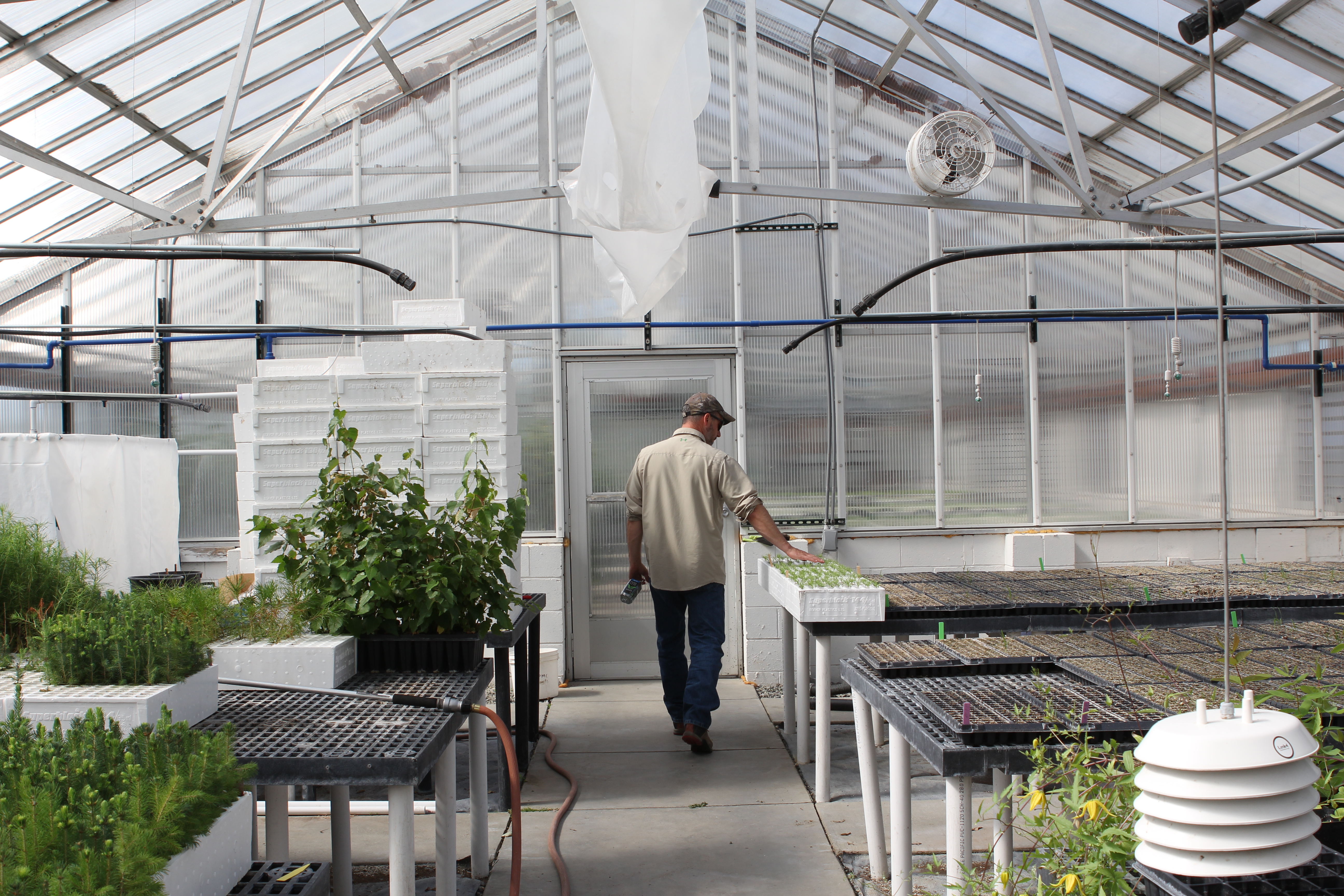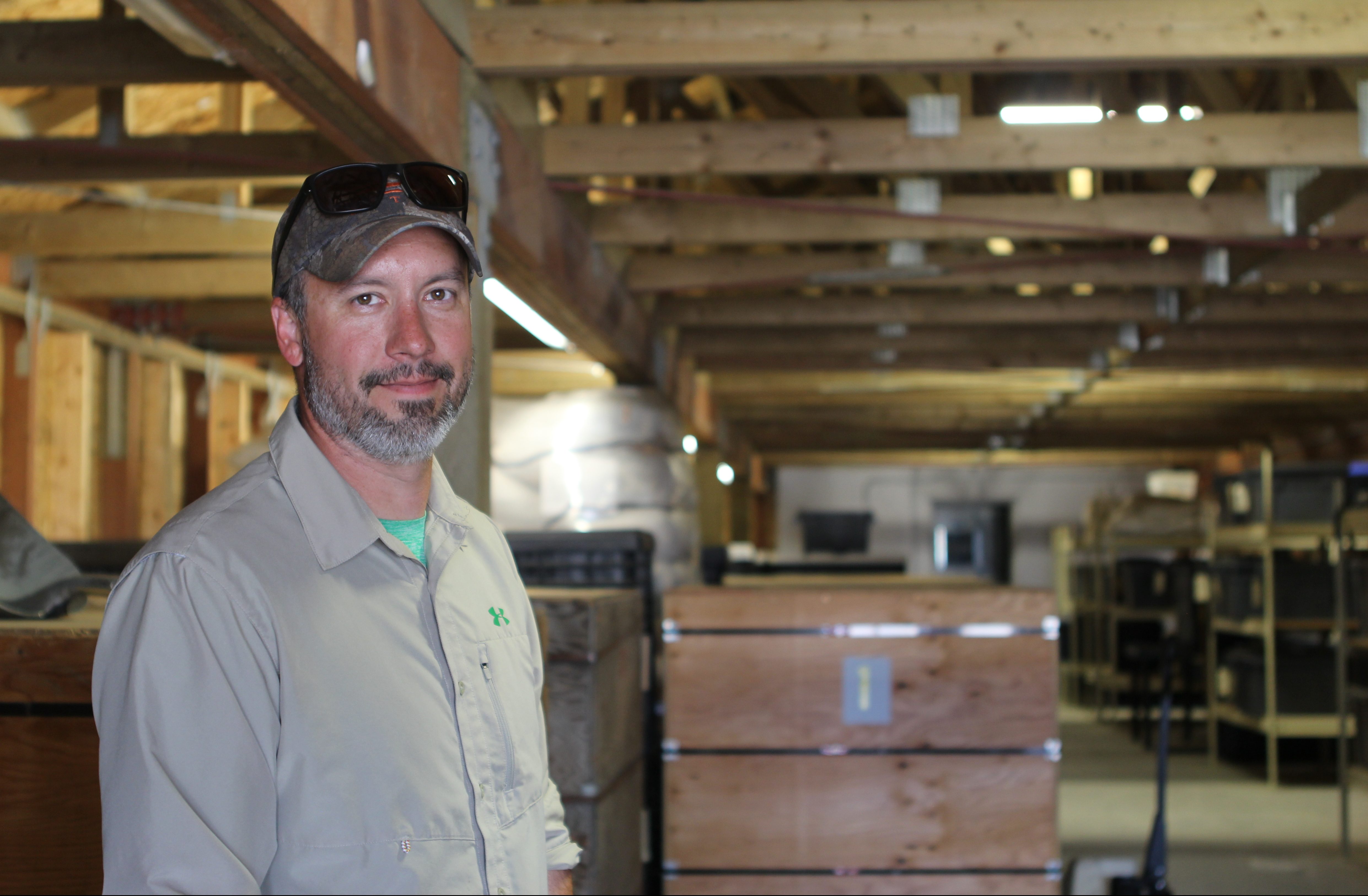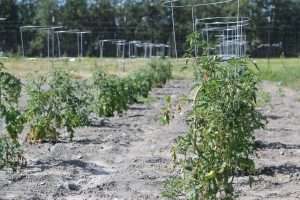
Marijuana and hemp are technically the same plant: cannabis sativa. The main difference is that hemp contains only trace amounts of Tetrahydrocannabinol (THC), the psychoactive drug in marijuana that gets you high.
So it’s surprising that as Alaska’s recreational marijuana industry has bloomed, growing hemp remains illegal. But that could change by 2019, when Rob Carter, the head of a new industrial hemp pilot program, hopes to have hemp plants in the ground in Alaska.
More than 300 people from across the state have expressed interest, but with its cold soils and long summer days, is Alaska really a good fit for a hemp industry?

Carter thinks so. He’s the managing agronomist for the Alaska Plant Materials Center outside of Palmer. The 400-acre experiment farm and seed cleaning facility is the epicenter of a soon-to-be industrial hemp pilot program that’ll enlist hemp growers from all over the state. Carter said he gets one to two calls a day from people interested in participating.
“It’s kinda the gold rush thing. Like a lot of people wanna come in, and it’s new, and they wanna be a participant,” Carter said.
Hemp is used in a bunch of different ways– to feed livestock, for medicinal purposes, it’s even used by the oil industry to fill cracks and fissures in the earth caused by drilling. Carter said he sees a lot of possibility from hemp-based oils like CBD, which people use to treat everything from epilepsy to inflammation. Right now, the federal government doesn’t regulate them, and a tiny bottle of CBD oil can cost over $100 online.
“And so you go to the natural health food store or the gas station, and you buy this CBD product, and you consume it. You tell me what’s in it,” he said. “You don’t know.”
Carter wants to design a pilot program that would increase transparency and more tightly regulate the growth of hemp and extraction of CBD oil. He thinks that because of its pristine environment, Alaska could offer something other places can’t.
“We have relatively clean soils and very clean water and an unbelievably clean growing environment in comparison to other states that have very large-scale industrial or mono-cropping agriculture around it,” Carter said. “I think that we have the opportunity to build a program that can be some of the cleanest industrial hemp anywhere in the world.”

Carter is clearly optimistic about the hemp industry in Alaska, but that’s not based off of hard evidence. It was illegal to grow in the US, even for research purposes, for more than 75 years. Then Congress authorized state-sponsored industrial hemp pilot programs in the 2014 Farm Bill. Alaska joined more than 30 other states when it legalized a program earlier this year.
The program provides a way to gather data about growing hemp in the state and figure out what works and what doesn’t. But until it’s up and running, it’s still illegal to grow or import hemp in Alaska.
Despite Alaska’s harsh climate, Carter thinks a permanent industrial hemp industry is viable here. He said whether illegal or legal, producers have been growing cannabis indoors and outdoors in Alaska for a long time and similar climates like Northern Europe have made it work.
“I think agriculturalists in Alaska in general, when you tell ’em you can’t do something, we find ways to make it happen,” Carter said.
Still, determination can only get you so far. Most strains of hemp need warm soils for their deep root systems and a period of darkness each day to flower and produce seeds. Alaskan summers offer neither. That’s why University of Alaska Fairbanks agronomist Bob Van Veldhuizen has his doubts about the industry. He thinks hemp would need to be grown indoors or in high tunnels, which is expensive. He’s not against legalization, but he thinks developing an industry might not be worth it.
“I’m sure that somebody somewhere would be able to do it, but the likelihood of this becoming a major, viable crop for Alaska at this point, seems to be pretty small,” Van Veldhuizen said.
Ember Haynes is a Talkeetna-based farmer and hemp product producer. She thinks that there are some varieties of the plant that will grow well here.
“There are varieties that will flower on their own so that’s totally an option,” Haynes said.
Haynes hopes to participate in the pilot program and grow hemp on a small scale to feed to her animals and use for companies Silverbear Sundries and Denali Hemp Company.
“I look at hemp especially in Alaska as being a grassroots movement, that it does not have to start with big agriculture, you know, that it can start on the small scale,” Haynes said.
And Haynes isn’t alone. Rob Carter said he’s seen such an overwhelming interest in the pilot program that it’s taking longer than expected to draft program regulations. After the regulations go up for public comment, they’ll open applications.
Carter said the more people, the better.
“The more plants we have in the ground and the more people that we have that participate,” Carter said, “the stronger the industry will be.”
Erin McKinstry is Alaska Public Media's 2018 summer intern. She has an M.A. from the University of Missouri's School of Journalism and a B.A. from Knox College. She's reported stories for The Trace, The Midwest Center for Investigative Reporting, Harvest Public Media, the IRE Radio Podcast, KBIA and The Columbia Missourian.




